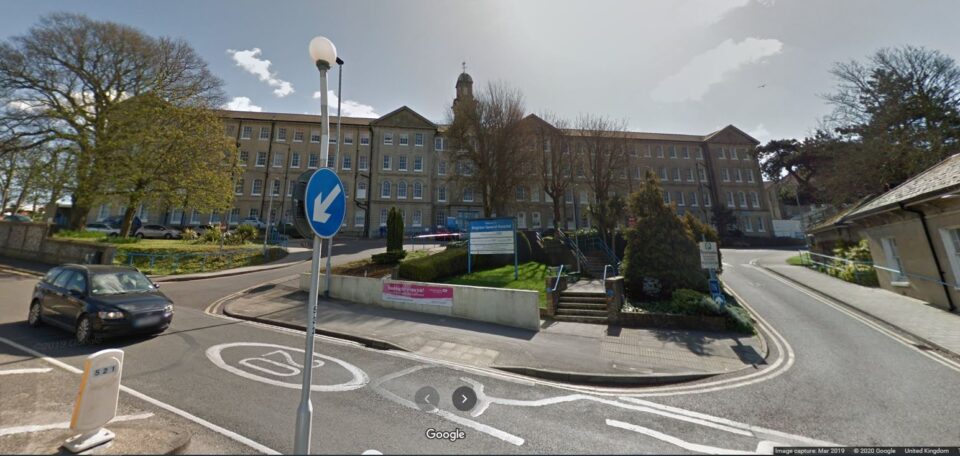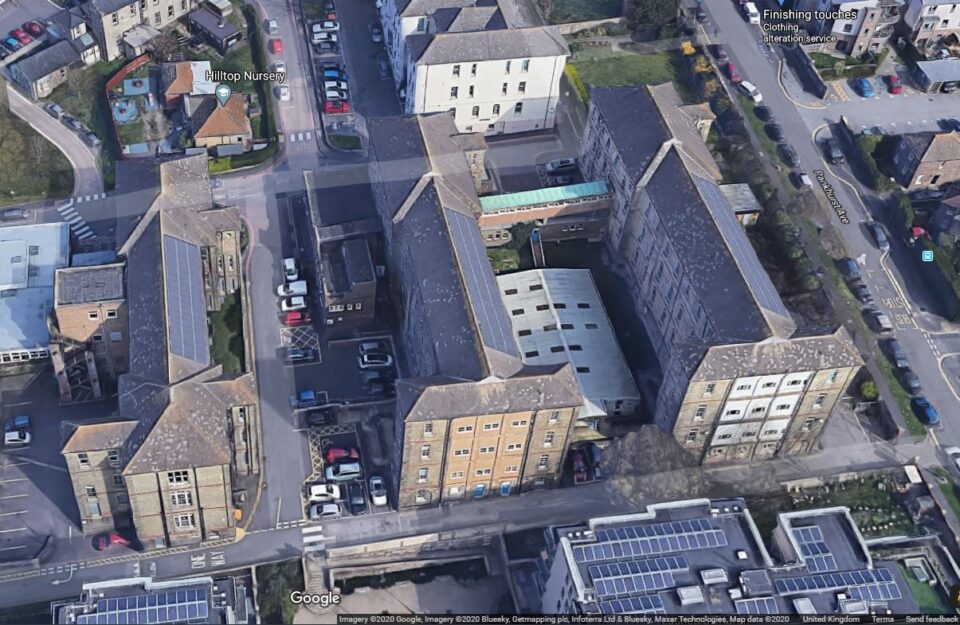The impending closure of the Brighton General Hospital site presents an unrepeatable opportunity to conserve a major historic asset of national significance and to make on a brownfield site a substantial contribution to reducing the city’s housing deficit. The Regency Society has already supported the campaign to have the part of the hospital site once occupied by the Brighton Workhouse designated as a Conservation Area.
Our vision for the former Brighton Workhouse is for it to be transformed from a place people were desperate to avoid into one they are keen to live and work in and to enjoy. Our ambition is for the site to be developed for the optimum benefit of the community, including the benefit the historic environment can bring to well-being.
We have three prime objectives for the workhouse site: securing the future of the historic buildings by sustainable reuse; generating new housing on the site in suitable historic buildings and in new buildings; enhancing the setting of the historic buildings and the character and amenity of the area by making it virtually car-free.
Government guidance on the disposal of heritage assets by public bodies is that accepting the highest purchase offer is not always appropriate, large historic sites should be considered as a whole, and heritage assets need sustainable ownership.
The Sussex Community NHS Foundation Trust proposes to develop a Community Health Hub on Elm Grove, adjacent to the workhouse site on the site of the Sussex Rehabilitation Centre and the former ambulance station.
Above: Front of Main Workhouse (Arundel) from Elm Grove
Above: Aerial view of the Workhouse Site from the North
Above:Aerial view of Hospital Site from the South
HISTORICAL DEVELOPMENT
The Workhouse Phase I
A trapezium of agricultural land between what are now Elm Grove, Freshfield Road and Pankhurst Avenue was bought for a new workhouse in 1854; the workhouse was built between 1865 and 1867. The cost was met by selling the desirable urban site of the previous workhouse on Church Hill. Soon afterwards, Isfield and Jevington were built, Marina was enlarged, and a third storey was added to the Lunatic Wards, Freshfield.
The Workhouse Phase 2
The site was extended west by a long narrow rectangle between Elm Grove and Pankhurst Avenue used for the construction of new Casual Wards, Bramber, in 1887 and the New Infirmary Wards, Edburton and Dyke in 1891 and Cuckmere in 1898.
The Hospital
Brighton Municipal Hospital developed the southern half of the workhouse kitchen garden in the 1930s as a nurses’ home, now replaced by the flats at 85 Pankhurst Avenue. The northern half is the proposed site for the new NHS Community Health Hub.
Above: Main Workhouse (Arundel) with Varndean top left, Jevington top right, Glynde bottom left
Above: Infirmary (Fulking) left, Lunacy Wards (Fletching) right
SPECIAL INTEREST and CHARACTER
The special interest of the site lies in its having once had quite possibly the most complete set of workhouse buildings in the country, the majority of which survive, making it reputedly the best preserved workhouse complex in the country. Its value is as much as a group as in the individual buildings.
The main Workhouse building (Arundel), the Infirmary (Fulking) and the Lunatic Wards (Fletching) survive in their totality and the women’s half of the original Casual Wards (Varndean). The less interesting though unusual Smallpox Wards and the general Fever Wards have been demolished. The uncommon separate Infant Ward survives, absorbed into a larger building (Glynde); children were already provided for separately at the now demolished Warren Farm Industrial Schools at Woodingdean.
There is substantial survival of the ancillary buildings which were the workplaces of the inmates. The original outer perimeter wall survives relatively intact on Elm Grove and Freshfield Road. Elements of the walls dividing the various enclosures within it remain, including the walls of the cart road and turning circle to the kitchen of the main Workhouse building and one of the pair either side of the Infirmary.
Architectural Interest
The visual architectural interest of the site lies largely in the expression of the relative importance of the buildings by their differently sophisticated designs. Major buildings have showpiece entrance fronts and are rendered, with “polite” classical detailing, while secondary and ancillary buildings are of vernacular flintwork with brick dressings.
The intangible architectural interest lies in the site as a demonstration of the development of the design of workhouses. The Workhouse proper (Arundel) is a late and mature example of a corridor-plan workhouse, with recesses at the back to admit light and air into the corridors and a separate chapel above the dining hall, rather than a single shared space. The canted window bays in the junction of the rear wing allowed the Master and Matron to oversee the outside airing grounds for the inmates from their apartment.
In the extension site, the New Casual Wards (Bramber) retain evidence for the cellular system whereby vagrants were required to undertake stone-breaking in individual workspaces attached to their cells.
The additional New Infirmary Wards (Edburton, Dyke and Cuckmere) are separate, high-ceilinged pavilion-plan “Nightingale wards” which provide superior ventilation, as adopted by military and civilian hospitals after the Crimean War.
Historic Interest
The main historical interest of the site is as evidence of changing attitudes towards and provision for those members of society less able to maintain and house themselves: a debate which continues today. It exemplifies the different forms of support available: indoor and outdoor relief and the casual wards. It is a tangible demonstration of the segregation of the adult inmates into men and women, the able bodied - of two degrees - and the infirm, the “deserving” and “undeserving” and of the different and changing tasks they were required to undertake, which gave the workhouse its name.
The New Casual Wards building is special evidence of contemporary attitudes to vagrancy. The scale of the three New Infirmary Wards is indicative of the changing nature of workhouse inmates as the 19th century progressed.
The use of the workhouse during the First World War as a hospital for wounded Indian soldiers adds a further layer of historical interest.
Above: Old Women’s Casual Ward (Varndean) centre, New Casual Wards (Bramber) right
Above: New Infirmary Wards, Cuckmere left, Dyke centre, Edburton right.
Historic Character
The original character of the workhouse was that of an enclosed precinct to contain the inmates, with a single controlled access point, within which the principal buildings had their own controlled enclosures, which were further subdivided for the various categories of inmates. Much of the space within the overall and the individual enclosures was garden areas. Though trees were originally confined to the outer perimeter, subsequently planted now-mature trees make a valuable contribution to the present character of the site.
The buildings take the form of detached blocks for different purposes. The core of the site around the main Workhouse building is laid out orthogonally to the bisecting line of the acute angle between Elm Grove and Freshfield Road. The peripheral buildings are laid out parallel to the surrounding roads. The formality of the layout is relieved by the fall of the ground from Pankhurst Avenue towards and down Elm Grove.
PROTECTING the HERITAGE ASSET
The whole of the former workhouse site already enjoys substantial protection as a heritage asset. The main Workhouse building (Arundel) is Grade II Listed. The listing includes the whole of the rear wing and The Lodge which was once attached to the back of the east wing. The interiors are all covered.
Recent unsuccessful applications to demolish the Lunatic Wards (Freshfield) and Isfield and a successful application for alterations to and demolition of additions to Dyke Building have all required listed building consent. These applications define the listed curtilage as including the whole of both phases of the workhouse site and determine that any development within them affects the setting of the Listed Building. The final draft of City Plan 2 confirms this, stating that "The three 1802 (sic) Infirmary and Workhouse Blocks are located within the curtilage of the principal listed building and are therefore also listed".
Designation as a Conservation Area would complement the existing protection of the site and ensure that it was treated holistically. The Conservation Management Plan to be prepared after designation would in effect become the Planning Brief for its redevelopment.
Above: Historical plan Below: Re-use plan
USING the HISTORIC BUILDINGS
All the historic workhouse buildings are capable of beneficial re-use, fully justifying their retention.
Residential Use
All the buildings which were once occupied by those receiving indoor relief are capable of residential use. The Workhouse proper (Arundel) is convertible to apartments; additional residential units could be built on the footprint of its lost laundry wing. The Infirmary (Fulking) and Lunatic Wards (Fletching) and Glynde are convertible to flats. The new Infirmary Wards (Cuckmere, Dyke, Edburton) are convertible to residential use as, potentially, is Jevington.
Alternative Uses
The surviving women’s side of the original Casual Wards (Varndean) is not suitable for residential use. It is conveniently located for both site occupants and the local community at the main site entrance and could be reused for retail and catering. Rebuilding the shell of the lost men’s side would give provide additional, more flexible space.
The replacement Casual Wards (Bramber) is not obviously suited to residential use and is well situated directly off Elm Grove to provide community facilities for both residents and the wider neighbourhood.
Isfield, Marina and Seaford are unsuitable for residential use but could find a variety of commercial uses appropriate to the buildings and their location. The basement floors of Cuckmere, Dyke and Edburton are unsuitable for residential use, but could have commercial uses.
CREATING NEW HOUSING
The final draft City Plan 2 calls for a minimum of 200 new housing units on the whole hospital site. The historic buildings suitable for residential reuse use could provide about 200 units, for over 700 people.
There are two areas within the workhouse site suitable for building additional housing, the triangular parking area in the northeast corner and a rectangular area on the west side between Bramber and Cuckmere which includes the present visitors’ car park, Poynings and Briggs. Developing these two areas at the same density of 115 units per hectare as 85 Pankhurst Avenue, on the site of the nurses’ home, would increase the total number of residents to over 1000 in about 280 units.
Allowing for the areas occupied by historic buildings that are unsuitable for residential use, this would give an overall density of around 80 units per hectare, 60% more than the minimum set by the Council for new developments outside the city centre.
The ratio of residential unit sizes in the historic buildings will be dictated by the buildings themselves: their plan form, structural compartmentation, the position of staircases and chimney breasts, fenestration, even ceiling heights. These constraints mean that apartments within the historic buildings could well exceed minimum space standards and be less affordable initially and in running costs.
Any mismatch with the required ratio of unit sizes and the balance between affordable and open-market housing can be redressed by new buildings. The amount of affordable housing re-development can support is not yet calculable. As an indicator, half of the potential newly built housing on the site would equate to 15% of the total.
ENHANCING the ENVIRONMENT
The character of the former workhouse area, the setting of the historic buildings and the public amenity of the site would be greatly enhanced by freeing it from traffic and visible parking.
There are currently 400 surface parking spaces on the workhouse site, 340 of which are accessible only via the main entrance. Allowing the same three parking spaces per four residential units as at 85 Pankhurst Avenue, the whole parking requirement of the workhouse site could be met by two levels of covered parking beneath the western development area, approached directly from Elm Grove using the existing service road west of Bramber.
The removal of on-site traffic, other than for service vehicles and blue badge holders, and elimination of kerbside parking would allow for shared use roads and some could become free of vehicles altogether. Traffic noise would be minimised and air-quality improved.
The reduced traffic level on site would avoid the need for separate entry and exit points. This would allow the incongruously landscaped traffic island to be replaced by a reconstruction of the shell of the lost men’s half of the Casual Wards, allowing the main pedestrian entrance to become, as originally, through the building.
Demolition of the derelict café on the corner of Elm Grove and Freshfield Road would allow the enclosure wall to be reinstated to its original alignment with a rounded corner. The Hilltop Nursery is of no intrinsic architectural quality and out of character with the historic buildings. A nursery could be included in community facilities in Bramber.
The space released by the demolition of post-Victorian buildings and additions and the removal of surface parking would provide additional public open space and recapture in part the original extent of garden areas. Additional tree planting would further enhance the character of the open spaces.
A limited number of additional pedestrian entrances to the site could be created without significantly affecting the special interest of the boundary wall. With the main entrance, new pedestrian entrances could connect the site with the surrounding community while keeping the feeling of its historic enclosed nature.
Some explanation of the history of the site could be added to the plans of the complex that will be required at the entrances and at key locations such as pedestrian exits from the car parks. Fuller historical interpretation could be placed in the community centre.










